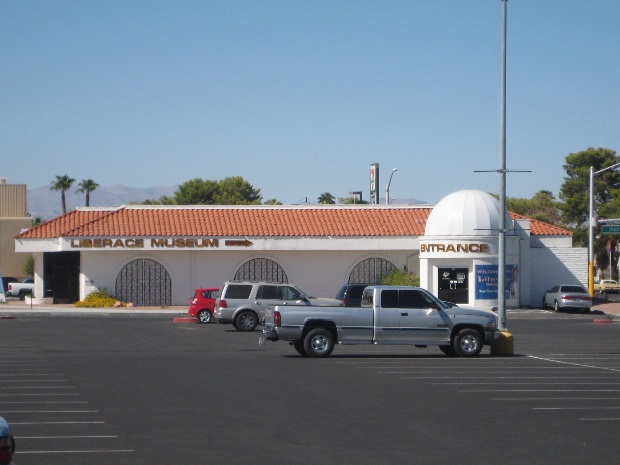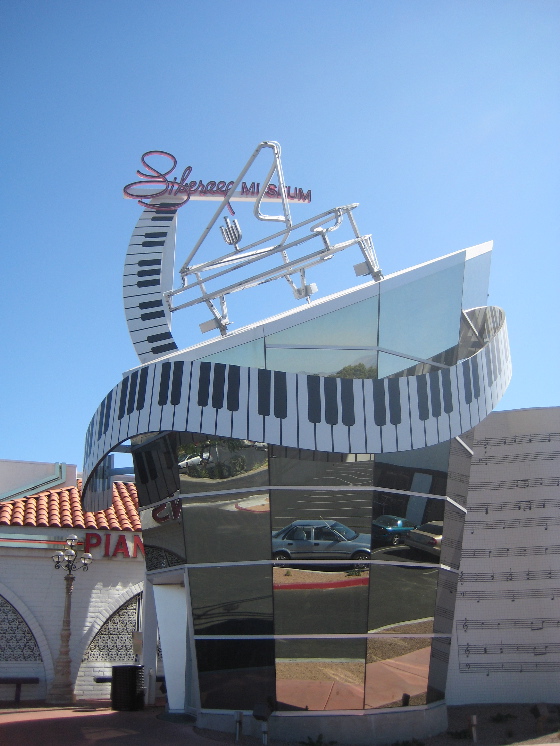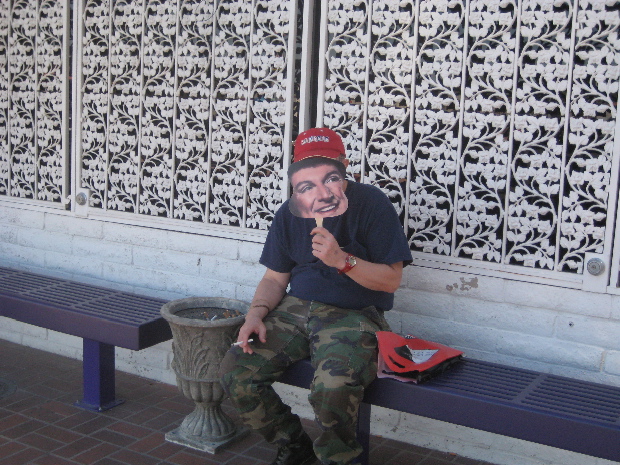
My sister and her kids are in town and two days ago we decided to visit the Liberace Museum, something I've wanted to do ever since I moved to Las Vegas.
The museum is located in two buildings in a mini-mall on Tropicana Avenue. Visiting it is a deeply American experience, like Liberace himself.
Liberace was a flamboyantly gay performer in the days when gays were violently persecuted in this country. He stood up before the nation and said, by every means available to him except words, “I'm gay! I love being gay! Isn't gayness fabulous?” and America, in its kindhearted hypocrisy, answered back, “Yes! Yes! Yes!”
In the Fifties, until the arrival of Elvis Presley on the scene, Liberace was the most popular concert performer in America — he could fill stadiums as easily as the hottest rock group today. The phenomenon is still hard to understand, because if Liberace had announced his sexual preferences openly, he would have been unemployable — he and his act would have been denounced from every editorial page and pulpit in America.

What was going on? I suspect it had something to do with the tension between the official culture's position on gays and the fact that almost everyone in America had a family member or family friend who was gay and o.k., except for that one little thing that couldn't be talked about.
Liberace couldn't talk about it, either, but he could celebrate it, celebrate the fact that it was o. k. This must have offered the culture some sort of deep psychic relief, an acknowledgment that kindly uncle Ralph in New York, who curiously never married because he “never found the right girl”, wasn't a hateful freak.
Liberace was a lovable freak, who curiously never found the right girl, either, despite a string of planted rumors in gossip columns that he was engaged to marry some decorous starlet or other. The sleazy tabloids told the truth about him often enough, but America preferred not to believe it — or rather, preferred to pretend not to believe it.

At the Liberace Museum, along with the mirrored pianos and Rolls-Royces, the two-hundred pound costumes made of feathers and monkey fur and sequins, the harness Liberace wore when he flew on stage, out of the closet and through the transom that were always just out of sight, is one of Liberace's prize possessions — the world's largest rhinestone.
It weighs over fifty pounds. It looks almost like a diamond but not quite. It's a real, honest-to-God rhinestone — and it's fabulous, like Liberace.
[Photos © 2008 Harry Rossi]
